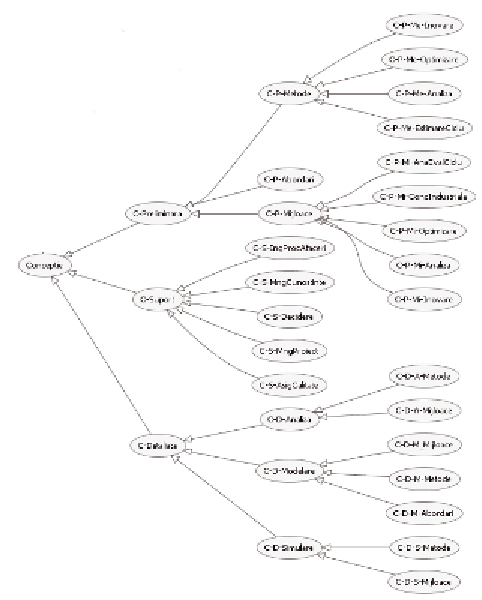Information Technology Reference
In-Depth Information
Figure 8. Snippet from the product life cycle ontology
protege.stanford.edu), for the design stage, is
presented in Figure 8.
persons in the network that have competencies
in each field.
Two significant values result were obtained:
(1) the number of competency fields in the do-
main of the product life cycle for each partner
(department/laboratory), and (2) the number of
competency fields for each partner, grouped by
products. One must note that a greater number
of competencies for a person does not mean that
this has a greater global level of competency than
another person, with a lower number, but possibly
with more impact and visibility at international
level (in a narrower field). Another map shows
the competencies at the network partners level
(Tables 1 and 2).
The analysis of the map can yield information
about the poor covered zones (empty spaces in the
tables) by certain partners or at the network level,
i.e. indications about the domains in which the
building the knowledge/
expertise Map
Information about the network members expertise
are processed following a bottom-to-top scheme,
starting from those of the persons and ending
with that of the network. To be able to automate
the data processing, at least partially, for each
field in the form which indicates the presence of
a competence, the value 1 was assigned, the rest
being left with the value 0 (blank).
The first map shows the personal competencies
and was created by summing the fields towards
the ontology root. A synthesis of the competencies
can be done by computing the percentage of the

Search WWH ::

Custom Search